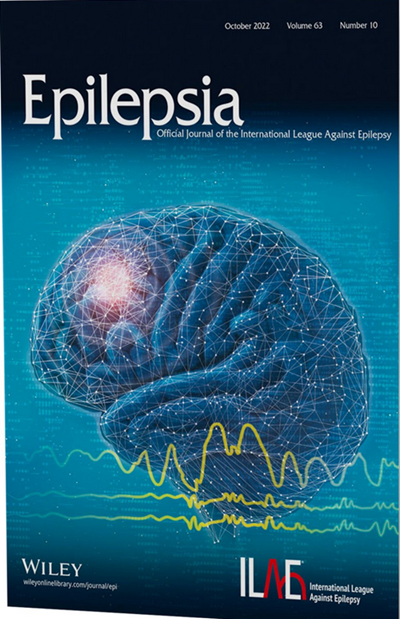摘要
目的:德雷维综合征(Dravet Syndrome,DS)是一种发育性癫痫性脑病,患者早期会出现难治性癫痫发作,并终生伴有各种并发症。越来越多的证据表明,从骨骼肌和成纤维细胞中的线粒体呼吸缺陷到对生酮饮食的反应,能量代谢与德雷维综合征密切相关。淋巴母细胞系(LCLs)揭示了神经系统疾病中的代谢改变,这表明它们在研究全身生物能方面具有实用性。在这项试验性研究中,我们利用 DS 患者的淋巴母细胞系来评估能量代谢:方法:从八名DS患儿(DS-LCLs)和性别/年龄匹配的对照组(对照-LCLs)中建立LCLs。细胞外通量分析测量了糖酵解功能、线粒体呼吸和脂肪酸氧化(FAO)。高分辨率呼吸测定法用于确定线粒体呼吸缺陷的部位。使用高含量筛选方法分析了线粒体含量和膜电位:结果:DS-LCLs表现出生物能受损,其特征是线粒体呼吸缺陷,基线呼吸和三磷酸腺苷连接呼吸低25%。同样,线粒体的最大容量降低了 26%,导致呼吸储备减少了 40%。它们表现出向脂肪酸代谢的转变,这表现在增加了内源性脂肪酸的利用以对抗细胞压力。线粒体氧通量受损,复合体 I 最为缺乏,复合体 II 活性降低。泄漏呼吸、线粒体含量、膜电位和糖酵解功能未受影响:DS患者的LCL显示线粒体呼吸能力下降。这些初步发现可能会加深我们对 DS 发病机制中能量代谢的了解。除了帮助确定新疗法外,该模型还可作为评估患者一生代谢功能的无创替代物。Objective: Dravet syndrome (DS) is a developmental and epileptic encephalopathy with early life intractable seizures and lifelong comorbidities. There is growing evidence linking energy metabolism to DS, from mitochondrial respiration deficits in skeletal muscle and fibroblasts from children with DS to responsiveness to ketogenic diets. Lymphoblast cell lines (LCLs) have revealed metabolic alterations in neurological disorders, suggesting their utility for studying systemic bioenergetics. In this pilot study, we used LCLs from patients with DS to evaluate energy metabolism.
Methods: LCLs were established from eight children with DS (DS-LCLs) and sex-/age-matched controls (control-LCLs). Extracellular flux analysis measured glycolytic function, mitochondrial respiration, and fatty acid oxidation (FAO). High-resolution respirometry was used to determine sites of mitochondrial respiration defects. Mitochondrial content and membrane potential were analyzed using high-content screening methods.
Results: DS-LCLs exhibit impaired bioenergetics, characterized by deficiencies in mitochondrial respiration with 25% lower baseline and adenosine triphosphate-linked respiration. Similarly, maximal mitochondrial capacity was 26% lower, leading to a 40% decrease in respiratory reserves. They exhibit a metabolic shift toward FAO, indicated by increased endogenous fatty acid utilization to counter cellular stress. Mitochondrial oxygen flux was impaired, with greatest deficiency in complex I, and reduced complex II activity. Leak respiration, mitochondrial content, membrane potential, and glycolytic function were unaffected.
Significance: LCLs from patients with DS reveal reduced mitochondrial respiratory capacity. These preliminary findings may enhance our understanding of energy metabolism in DS pathogenesis. Beyond helping identify new therapies, this model may noninvasively serve as a surrogate for evaluating metabolic function throughout a patient's life.

 求助内容:
求助内容: 应助结果提醒方式:
应助结果提醒方式:


